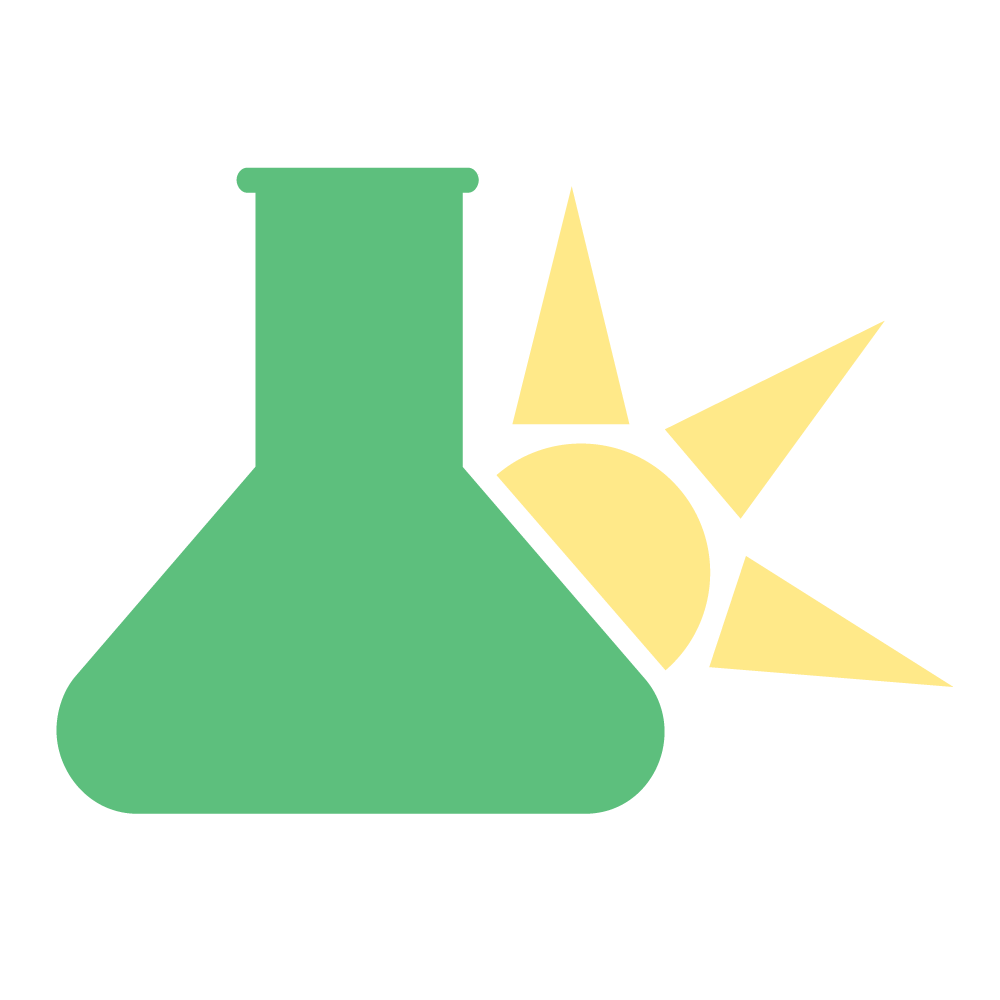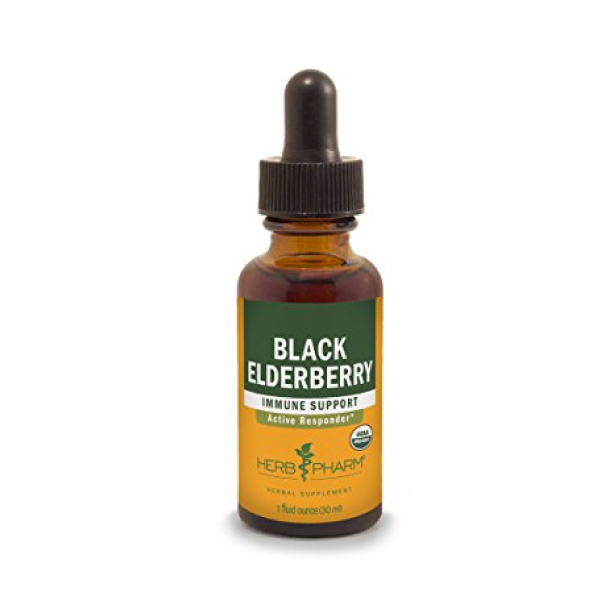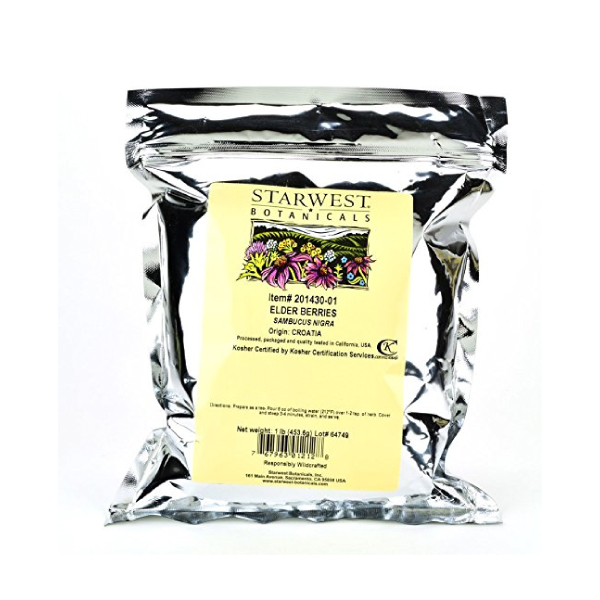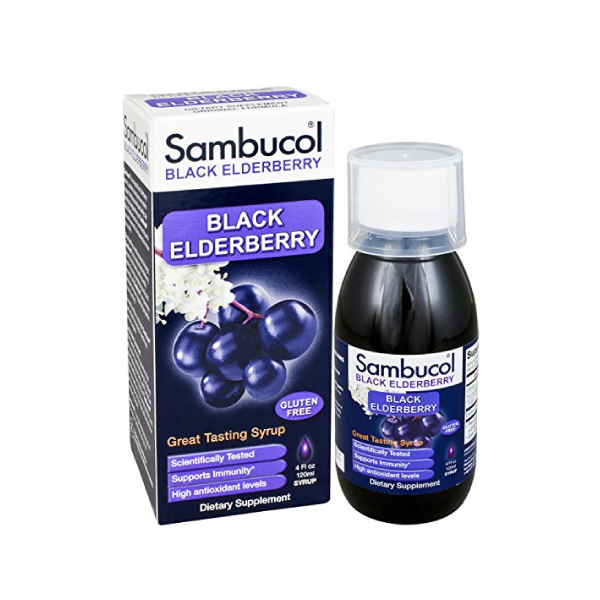Camellia sinensis is the plant that brings us tea in all its many colors and flavors. It has a fairly high level of caffeine, and plenty of antioxidants. It makes a great tea for...
Elderberry (Sambucus nigra)
What is Elderberry?
Elder is an invasive tree spread throughout most of the world.
It can be found in cold climates like Canada and Scandinavian countries, as well as tropical areas in Central and South America, Southeast Asia, and Australia.
Elder trees are even frequently found in remote areas like the Pacific Islands.
Elder has many uses, especially for upper respiratory infections for its antitussive and antiviral activity.
As an antiviral, it has a relatively narrow range of efficacy, which is specific to enveloped viruses like influenza, and will only have a potent effect in the early stages of viral infection. Elder is highly effective for early-stage viral infection and one of the best herbs to keep around in in the event of early signs of cold or flu.
Featured Elder Products
What is Elder Used For?
Elder is primarily used in the acute stage of respiratory infections. it has the unique ability to structurally inhibit the reproductive cycle of the influenza virus. If used in the early stages of infection elder can be used to prevent widespread infection.
elder is also used for its ability to interact with the central nervous system. For this effect, elder is often used for nerve-related pain.
Traditional Uses of Elder
The use of elder dates back a very long time. Evidence of elder seeds, pollen, and dried fruits have been found at a Bronze Age archaeological site in Tuscany (Italy) [12], a Neolithic site in the French Alps [13], and Durankulak site the Black Sea coast and north-eastern Bulgaria [13].
Elder is used in Ayurvedic medicine, but not in depth. Its berries are used primarily as a diuretic, and aperient, while the bark as a hydragogue, cathartic and anti-epileptic.
In traditional Chinese medicine, elder is known as "mao gu xiao" (Sambucus formosana or Sambucus chinensis) is used (rarely) to treat liver disease. It's considered to be a warm bitter, useful for dispelling blood stasis.
In Indonesia, elder (Sambucus javanica) is used for pain relief, beri beri, and jaundice.
In Western herbal medicine, elder is most commonly used to treat sore throats, and as a purgative or emetic. It's also used to treat wounds (the leaves mainly), or as a diuretic (whole plant).
Elder was commonly combined with herbs like yarrow or boneset in the treatmeent of cold and flu.
Herb Details: Elder
Herbal Actions:
- Antiviral
- Emetic (high doses)
- Antitussive
- Nervine (leaves)
Weekly Dose
- (1:2 Liquid Extract)
15-40 mL - View Dosage Chart
Part Used
Flowers and berries
In some cases the leaves, bark, and roots can also be used with caution.
Family Name
Caprifoliaceae
Distribution
Invasive the world over. Common in North America, Western Asia, Europe, The Pacific Islands, and Austalia.
Sambucus australasica and Sambucus gaudichaudiana (Australian white elder) are found primarily in Australia and South America.
Constituents of Interest
- Cyanidin-3-O-glucoside
- Ribosome-inactivating proteins (RIPs)
Common Names
- Elder
- Black Elder
- Elderberry
- European Elder
Botanical Information:
There are about 30 different species of elder, 3 of which are most commonly used as medicine. The common names for these species include blue elder (Sambucus nigra), red elder (Sambucus racemosa), and white elder (Sambucus australasica).
Phytochemistry
+ Constituent Breakdown:
Elder contains several hundred compounds.
This includes phosphorous (high), vitamins A, B6, and C.
Also contained are polyphenols, anthocyanins (blue-berries)(cyanidin 3-glucoside, cyanidin-3-sambubioside, cyanidin-3, 5-diglucoside, and cyanidin-3-sambubioside-5-glucoside), anthoxanthins (white berries), ribosome-inactivating proteins (RIPs) (TYPE 2 RIPs; nigrin b, basic nigrin b, SNA, SNA1, and SNLRP, nigrin f, nigrin s, ebulin 1, ebulin r1, ebulin r2. TYPE 1 RIPs; ebulitins), flavonol glycosides (quercetin-3-O-rutinoside, kaempferol-3-O-rutinoside and isorhamnetin-3-O-rutinoside (about 90% of the total flavonoid content)), phenolic acids (5-O-cafeoylquinic acid and 1,5-di-O-caVeoylquinic acid (about 70% of the total phenolic acid content)), triterpenoids (ursolic acid),
Key Compounds Found in Elder:
| Chemical class | Chemical Name | Pharmacology |
|---|---|---|
| Flavonoid pigments | Anthocyanins (S. nigra/canadensis) and anthoxanthins (S. australasica) | Water soluble flavonoids that are absorbed through the small intestine and reach peak concentration systemically after 30-60 minutes. They Remain mostly un metabolised before being excreted in the urine. |
| Flavonol glycosides | quercetin-3-O-rutinoside, kaempferol-3-O-rutinoside and isorhamnetin-3-O-rutinoside (about 90% of the total flavonoid content) | Some have been found to bind to viral membranes, possibly delivering main mechanism of actions through hemagglutinin, M2 ion channel, and neuraminidase inhibition. |
| Phenolic acids | 5-O-caVeoylquinic acid and 1,5-di-O-caVeoylquinic acid (about 70% of the total phenolic acid content). | Caffeoylquinic acids are mainly found in the plasma and urine as hydroxycinnamate metabolites. Research has suggested that most of the absorption is done in the upper GIT. Peak concentration varies greatly, ranging from 30 min to 6 hours (Tmax). |
| Triterpenes | Ursolic acid | Downregulates MMP-9 and inhibits COX-2. Reach peak concentration in the blood after 1 hour. Half life is 4 hours. |
| Lignans | Nigrin b, basic nigrin b, SNA, SNA1, and SNLRP, nigrin f, nigrin s, ebulin 1, ebulin r1, ebulin r2 (type 2 RIPs). ebulitins (Type 1 RIP) | RIPs have been shown to bind to viral envelop proteins, and have shown activity on sialic acid in the GIT (not confirmed in the repiratory epithelial tissue). The pharmacokinetics are not well understood. |
What's The Deal With Elders Toxicity Claims?
A group of compounds found in elder called lectins are closely related to the common rat poison — ricin.
Leptins are essentially proteins that can bind with sugars. If leptins like ricin get into the cells, they can interact with our ribosomes (the organelle that does most of the manufacturing of proteins and various other compounds).
The common name given to leptins like ricin that stop the ribosomes from working is referred to as "Ribosome-Inactivating Proteins" or RIPs for short.
RIPs are also thought to be protective against viruses and predators, as well as a way for the plant to store nitrogen.
Several RIPs have been isolated from black elder [18-20].
Similar lectin-compounds can be found in other medicinal plants with similar uses (antiviral), and limitations (emetic) — Phytolacca americana (Phytolacca antiviral protein or PAP).
There are three types of RIPs: Type 1, type 2, and type 3. [19, 20].
Both ebulin and ricin are type two RIPs.
How Elder Leptins Are Different Than Ricin
Despite structural similarities, elder isn't as toxic as ricin — and it's not as toxic as we once thought.
The Ld50 of ebulin 1 was 250 mg/kg, compared to ricins 0.023 µg/kg (intraperitoneal) and 0.0075 µg/kg (intravenous) [22] — that's a huge difference. You would essentially need more than 9000 times the dose of ebulin 1 compared to ricin to reach the same toxic dose.
There are some exceptions.
RIPs such as ebulin f and SELfd are toxic and resist breakdown in the stomach — leading to gastrointestinal irritation and upset.
The solution to this problem is to heat it before using it. The heat breaks reverse the ability for these RIPs to be broken down by pepsin in the stomach — thus preventing the toxic side-effects of ebulin f. [21, 25].
Clinical Applications Of Elder:
Elder is a great antiviral herb, especially for Influenza and some of the other enveloped viral species if used at the early stages of infection.
Cautions:
Elder is an emetic, especially in preparations that contain fresh plant material (unheated). If nausea occurs, dial back the dose. Contrary to popular belief elder is NOT poisonous. Emetics are frequently misinterpreted to be dangerously poisonous.
Elder is thought to decrease the effectiveness of morphine.
+ Contraindications
- Small children
- Caution advised with larger doses
Recent Blog Posts:
References:
Zakay-Rones, Z., Varsano, N., Zlotnik, M., Manor, O., Regev, L., Schlesinger, M., & Mumcuoglu, M. (1995). Inhibition of several strains of influenza virus in vitro and reduction of symptoms by an elderberry extract (Sambucus nigra L.) during an outbreak of influenza B Panama. The Journal of Alternative and Complementary Medicine, 1(4), 361-369. [in vitro]
Chen, C., Zuckerman, D. M., Brantley, S., Sharpe, M., Childress, K., Hoiczyk, E., & Pendleton, A. R. (2014). Sambucus nigra extracts inhibit infectious bronchitis virus at an early point during replication. BMC veterinary research, 10(1), 24. [in vitro]
Mascolo, N., Capasso, F., Menghini, A., & Fasulo, M. P. (1987). Biological screening of Italian medicinal plants for anti‐inflammatory activity. Phytotherapy research, 1(1), 28-31.[in vitro]
Yeşilada, E., Üstün, O., Sezik, E., Takaishi, Y., Ono, Y., & Honda, G. (1997). Inhibitory effects of Turkish folk remedies on inflammatory cytokines: interleukin-1α, interleukin-1β and tumor necrosis factor α. Journal of Ethnopharmacology, 58(1), 59-73. [in vtro]
Harokopakis, E., Albzreh, M. H., Haase, E. M., Scannapieco, F. A., & Hajishengallis, G. (2006). Inhibition of proinflammatory activities of major periodontal pathogens by aqueous extracts from elder flower (Sambucus nigra). Journal of periodontology, 77(2), 271-279. [in vitro]
Abuja, P. M., Murkovic, M., & Pfannhauser, W. (1998). Antioxidant and prooxidant activities of elderberry (Sambucus nigra) extract in low-density lipoprotein oxidation. Journal of Agricultural and Food Chemistry, 46(10), 4091-4096. Link. [in vitro]
Murkovic, M., Adam, U., & Pfannhauser, W. (2000). Analysis of anthocyane glycosides in human serum. Fresenius' journal of analytical chemistry, 366(4), 379-381. [in vitro].
Serkedjieva, J., Manolova, N., Zgórniak‐Nowosielska, I., Zawilińska, B., & Grzybek, J. (1990). Antiviral activity of the infusion (SHS‐174) from flowers of Sambucus nigra L., aerial parts of Hypericum perforatum L., and roots of Saponaria officinalis L. against influenza and herpes simplex viruses. Phytotherapy Research, 4(3), 97-100. [in vitro]
Konlee, M. (1998). A new triple combination therapy. Positive health news, (17), 12. [case report]
Ulbricht, C., Basch, E., Cheung, L., Goldberg, H., Hammerness, P., Isaac, R., ... & Weissner, W. (2014). An evidence-based systematic review of elderberry and elderflower (Sambucus nigra) by the Natural Standard Research Collaboration. Journal of dietary supplements, 11(1), 80-120. Link. [review article]
Christensen, L. P., Kaack, K., & Fretté, X. C. (2008). Selection of elderberry (Sambucus nigra L.) genotypes best suited for the preparation of elderflower extracts rich in flavonoids and phenolic acids. European Food Research and Technology, 227(1), 293-305. Link. Other.
Mariotti-Lippi, L.; Bellini, C.; Mori, S. Palaeovegetational reconstruction based on pollen and seeds/fruits from a bronze age archaeological site in Tuscany (Italy). Plant. Biosyst. 2010, 144, 902–908. [OTHER]
Martin, L.; Jacomet, S.; Thiebault, S. Plant economy during the Neolithic in a mountain context: The case of “Le Chenet des Pierres” in the french Alps (Bozel-Savoie, France). Veg. Hist. Archaeobot. 2008, 17, s113–s122. [OTHER]
Marinova, E.; Atanassova, J. Anthropogenic impact on vegetation and environment during the
Bronze Age in the area of Lake Durankulak, NE Bulgaria: Pollen, microscopic charcoal,
non-pollen palynomorphs and plant macrofossils. Rev. Palaeobot. Palynol. 2006, 141, 165–178. [OTHER]Mikulic-Petkovsek, M.; Schmitzer, V.; Slatnar, A.; Todorovic, B.; Veberic, R.; Stampar, F.; Ivancic, A. Investigation of anthocyanin profile of four elderberry species and interspecific hybrids. J. Agric. Food Chem. 2014, 62, 5573–5580. [Chemical profiling].
Ding, M.; Feng, R.; Wang, S.Y.; Bowman, L.; Lu, Y.; Qian, Y.; Castranova, V.; Jiang, B.H.; Shi, X. Cyanidin-3-glucoside, a natural product derived from blackberry, exhibits chemopreventive and chemotherapeutic activity. J. Biol. Chem. 2006, 281, 17359–17368.
Parikh, B.A.; Tumer, N.E. (2004). Antiviral activity of ribosome inactivating proteins in medicine. Mini Rev. Med. Chem. 2004, 4, 523–543.
Girbes, T.; Ferreras, J.M.; Arias, F.J.; Stirpe, F. Description, distribution, activity and phylogenetic relationship of ribosome-inactivating proteins in plants, fungi and bacteria. Mini Rev. Med. Chem. 2004, 4, 461–476.
Stirpe, F. Ribosome-inactivating proteins. Toxicon 2004, 44, 371–383.
Lapadula, W.J.; Sánchez Puerta, M.V.; Juri Ayub, M. Revising the taxonomic distribution, origin
and evolution of ribosome inactivating protein genes. PLoS One 2013, 8, e72825.Jiménez, P., Tejero, J., Cordoba-Diaz, D., Quinto, E. J., Garrosa, M., Gayoso, M. J., & Girbés, T. (2015). Ebulin from dwarf elder (Sambucus ebulus L.): a mini-review. Toxins, 7(3), 648-658. Link. [review article].
He, X.; McMahon, S.; Henderson, T.D.; Griffey, S.M.; Cheng, L.W. Ricin toxicokinetics and its sensitive detection in mouse sera or feces using immuno-PCR. PLoS One 2010, 5, e12858. [Animal study]
Iglesias, R.; Citores, L.; Ferreras, J.M.; Pérez, Y.; Jiménez, P.; Gayoso, M.J.; Olsnes, S.; Tamburino, R.; di Maro, A.; Parente, A.; et al. Sialic acid-binding dwarf elder four-chain lectin displays nucleic acid N-glycosidase activity. Biochimie 2010, 92, 71–80.
Vimr, E.; Lichtensteiger, C. To sialylate, or not to sialylate: that is the question. Trends Microbiol. 2002, 10, 254–257.
Jimenez, P.; Cabrero, P.; Basterrechea, J.E.; Tejero, J.; Cordoba-Diaz, D.; Girbes, T. Isolation and molecular characterization of two lectins from dwarf elder (Sambucus ebulus L.) blossoms related to the Sam n1 allergen. Toxins 2013, 5, 1767–1779
Eleuthero Root (Eleutherococcus senticosus)
Manuka (Leptospermum scoparium)
What is Manuka?
In New Zealand, where manuka trees grow, the Maori consider male tea tree plants "Kanuka" and the female plants "Manuka". The plant is regarded very highly in this culture as a medicinal species.
The most well-known form of manuka is in manuka honey. This is a honey made by bees feasting primarily on manuka bushes. The honey has an impressive antibacterial profile when made from these plants. This is also reflected in the herb itself, which has been shown to have potent antibacterial, anti-fungal, and antiviral activity.
Most of the medicinal benefits of the plant come from its essential oil content, which can vary a lot depending on the region the plant was grown in.
What is Manuka Used For?
Internally, manuka is used to treat gastrointestinal conditions like diarrhea, colic, inflammatory bowel syndrome, and dysentery. It's also used for urinary tract infection, anxiety, and cold/flu infections.
Manuka is used topically for its antibacterial, and vulnerary actions. It's used to treat slow healing skin and bone injuries, bacterial infections, candida, and eczema. It can be gargled for gingivitis, or for general oral hygiene.
Manuka honey is another common form of the plant. It's become so popular worldwide, it's been standardised by the phenol content. This is expressed as a unique manuka factor (UMF) value set by the Active Manuka Honey Association (AMHA). Anything over UMF 5 is considered strong enough to kill MRSA.
Herb Details: Manuka
Herbal Actions:
- Anti-inflammatory
- Antibacterial
- Antifungal
- Antispasmodic
- Anxiolytic
- Diaphoretic
- Diuretic
- Febrifuge
- Sedative
- Astringent
Weekly Dose
- (1:2 Liquid Extract)
20-65 mL - View Dosage Chart
Part Used
- Leaves, Flowers, Bark
Family Name
- Myrtaceae
Distribution
- New Zealand
Constituents of Interest
- Leptospermone
- Sesquiterpenes
- Tannins
- Citronellal
Common Names
- Manuka
- Tea Tree
- New Zealand Tea Tree
Quality
- Neutral-Warm
Pregnancy
- Unknown
Taste
- Spicy
Duration of Use
- Long term use is acceptable, but should be taken away from food.
Botanical Information
Manuka is a member of the Myrtaceae family of plants. This family contains as many as 133 different genera, and around 3800 different species, many of which are medicinally relevant.
Clinical Applications Of Manuka:
Manuka is useful both internally and topically. It's been shown to be an effective antibacterial agent for various forms of bacteria (including Staphylococcus). It's also an effective anti-fungal and antiviral (including HSV). The antibacterial effects were the most notable, with only some chemotypes of Manuka showing potent anti-fungal benefits.
Manuka can be used for nearly any form of bacterial infections both topically and internally, as well as wounds, ulcers, and gastrointestinal inflammation or infection. It's also useful for skin inflammation like eczema or psoriasis. The muscle relaxant effects make it useful for injuries, muscle tension, colic, and insomnia.
Cautions:
Manuka is widely considered safe and there are no common side effects of the herb.
+ Contraindications
Avoid long-term use alongside food. Tannins may impede mineral absorption.
Recent Blog Posts:
Mullein (Verbascum thapsus)
Mullein
Mullein is considered a staple in herbal medicine. It wasn't native to North America and was brought over by European settlers. Despite the new introduction of the herb, it was quickly adopted into use by the local native Americans and is even referred to commonly as Indian Tobacco.
Mullein is a very safe herb and offers benefits to a number of different systems in the body.
Out of all systems, mullein is most commonly used for respiratory and digestive system conditions. It's popular as an anti-catarrhal and for both soothing dry coughs, and eliminating catarrh with productive coughs. Although the entire plant can be used for either one, the leaves are generally preferred for dry coughs and the roots for productive coughs.
Mullein is as useful topically as it is internally for inflammation, muscle spasms, and infection.
What Is Mullein Used For?
Mullein is mainly used for treating respiratory infections and persistent coughs. Somewhat ironically, it's often smoked for its soothing effect on the lungs. It tends to increase moisture in the lungs, especially the leaves, making it especially useful for unproductive, dry coughs.
It's also used for gastrointestinal inflammation, parasitic infection, and muscle aches. It tends to have a humidifying effect throughout the body, providing a soothing effect, especially with dryness.
One of the most well-known uses for the herb is in the form of an infused oil for ear infections.
Herb Details: Mullein
Main Herbal Actions:
- Anthelmintic
- Anti-catarrhal
- Antispasmodic
- Astringent
- Expectorant
- Lymphatic
- Antibacterial
Weekly Dose
- (1:2 Liquid Extract)
20-60 mL - View Dosage Chart
Part Used
- Leaf, root, and flower
Family Name
- Scrophulariaceae
Distribution
- Originates from Europe around the Mediterranean, but has spread all around Europe & North America
Constituents of Interest
- Iridoid glycosides
Common Names
- Mullein
- Lady's Flannel
- Gordolobo
- Punchón
- Candelaria
Quality
- Root: Neutral, drying
Leaf: Cool, moistening
Flower: Cool
Pregnancy
- Unknown
Taste
- Salty
Duration of Use
- Long term use is acceptable.
Botanical Information
Mullein belongs to the figwort family (Scrophulariaceae) — a family consisting or roughly 65 different genera and 1800 species.
The Verbascum genus itself contains around 250 different species.
Verbascum is a popular garden plant for its ability to thrive in dry, nutrient-poor soils, and for their incredibly long flower duration.
The herb is biennial — the first season growing in a rosette leaf pattern, the second with a large velvety flower spike. Some mullein plants can grow up to three meters tall.
Clinical Applications Of Mullein:
Although there are many ways to use mullein, it excels with treating respiratory tract conditions. The leaves are excellent for treating dry coughs, while the root is much better for productive wet coughs.
Mullein is useful as a topical treatment for skin irritations, and as an oil for ear infections, especially the more drying flower of the plant.
Mullein also makes for an excellent lymphatic, both internally and externally.
Cautions:
Caution advised when working with the fresh leaf of this plant, as it can cause contact dermatitis in some individuals.
Recent Blog Posts:
Graviola (Annona muricata)
What is Graviola?
Graviola is a large tropical tree with a rich history of traditional use for conditions like cancer, parasitic infection, insomnia, and dysentery. Modern use remains very similar, mainly focusing on tension headaches and muscle aches, insomnia, diabetes, cancer, hypertension, and parasitic infection.
Although the entire plant has been used as medicine by various traditional medical systems, the most common form the plant is available in today is as a leaf extract, and raw leaves intended for tea.
Graviola is gaining in popularity outside worldwide as a general health supplement, blood sugar regulator, and anticancer agent. As a result, it's getting easier to find the herb as time goes on. It is likely this tea will become a staple in Western herbal medicine in the coming years.
Featured Graviola
How Is Graviola Used?
Graviola is mainly used as an adjunctive treatment for cancer, especially leukemia and other haematological cancers, as well as prostate, colon, and breast cancers.
Graviola is also popular as an anti-diabetic herb, and can be used to reduce hypertension, especially in combination with diabetes or metabolic syndrome.
Graviola is a potent anti-parasitic, useful for a wide range of different parasitic species, including worms, protozoa, and bacterial parasites.
Traditional Uses of Graviola
+ South America
Graviola originated from South America and/or the Carribean. All parts of the plant were used as medicine for a wide range of conditions.
The most common use of the plant appears to involve cancer treatment and parasitic infection.
The darkest leaves on the plants were used primarily as a sedative or antispasmodic. They were used to treat insomnia, arthritic pains, colic, dysentery, muscle aches, headaches, and diabetes. The leaves were often placed inside a pillow or bedsheets to improve sleep.
In Brazil, the leaves were made into a tea for treating various liver conditions. The oil of the leaves and unripe fruits were used topically for treating neuralgia, and arthritis.
In Peru, the leaves were used to treat excess catarrh, and the bark and root were used for treating diabetes, insomnia, and muscle aches.
In Guyana, the leaves were used as a heart tonic.
+ Southeast Asia
In Southeast Asia, graviola was an important treatment for malaria. It was made into candies, ice cream, and syrups for treating malaria and other parasites.
Herb Details: Graviola
Herbal Actions:
- Anticancer
- Antinflammatory
- Antioxidant
- Antispasmodic
- Anticonvulsant
- Antidepressant
- Antidiabetic
- Antibacterial
- Antiarthritic
- Antilithic
- Antimalarial
- Bradycardic
- Digestive stimulant
- Febrifuge
- Hepatoprotective
- Hypotensive
- Sedative
- Vasodilator
Weekly Dose
- (1:2 Liquid Extract)
40-80 mL - View Dosage Chart
Part Used
- Leaves
Family Name
- Annonaceae
Distribution
- North & South America, The Caribbean, Indonesia, Western Africa, Pacific Islands
Constituents of Interest
- Acetogenins
- Alkaloids (reticulin, coreximine, coclarine and anomurine)
- Essential oils (β-caryophyllene, δ-cadinene, epi-α-cadinol and α-cadinol)
- Quercetin
Common Names
- Graviola
- Custard Apple Tree
- Soursop
- Annona
- Guanabana (South America)
Quality
- Cool*
Pregnancy
- Unknown
Taste
- Sour
Duration of Use
- Avoid long term use.
Botanical Information
Graviola is a large tree, growing to a height of 10m. It requires high humidity, warm weather, and high annual rainfall in order to thrive. It produces large, edible fruits with an acidic taste (hence the common name soursop).
There are over 130 different genera in the Annonaceae family, and around 2300 different species. The Annona genus itself has about 70 different species. Annona muricata is the most commonly grown worldwide.
Phytochemistry
There are over 100 annonaceous acetogenins in the plant, which are considered to be the primary active constituents of the plant. Structurally these chemicals are derivatives of long chain (C35 or C37) fatty acids. These compounds are cytotoxic against tumour cell lines, and molluscicidal.
Graviola is also rich in alkaloids, saponins, terpenoids, flavonoids, coumarins, lactones, anthraquinones, tannins, cardiac glycosides, phenols, and phytosterols.
+ Complete Phytochemical Makeup
Annonaceous Acetogenins
The leaves contain annomuricins A and B, gigantetrocin A, annonacin-10-one, muricatetrocins A and B, annonacin, goniothalamicin, muricatocins A and B, annonacin A, (2,4-trans)-isoannonacin, (2,4-cis)-isoannonacin, annomuricin C, muricatocin C, gigantetronenin, annomutacin, (2,4-trans)-10R-annonacin-A-one, (2,4-cis)-10R-annonacin-A-one, annopentocins A, B and C, cis- and trans-annomuricinD-ones, annomuricine, muricapentocin, muricoreacin and murihexocin C and annocatacin A and B.
Alkaloids
Graviola contains reticulin, coreximine, coclarine and anomurine.
Essential Oils
Graviola contains β-caryophyllene, δ-cadinene, epi-α-cadinol and α-cadinol.
Clinical Applications Of Graviola:
Graviola is useful for parasitic infection, including protozoan, and helminth parasites. It's used as a mild sedative and antispasmodic, and can be very useful for gastrointestinal inflammation and dysbiotic conditions.
Graviola is also a popular treatment for diabetes by slowing lipid per-oxidation, and restoring islet beta-cells in the pancreas.
It's commonly used as an adjunctive treatment of cancer, especially haematological cancers and colon cancer.
Cautions:
Graviola has been reported to increase symptoms of Parkinson's Disease.
Caution advised in combination with other hypoglycaemic drugs due to potential additive effect.
+ Contraindications
- May exacerbate Parkinson's Disease symptoms (Acetogenin content)
- Caution advised in combination with other hypoglycemic drugs due to potential additive effect.
Recent Blog Posts:
References:
Moghadamtousi, S. Z., Fadaeinasab, M., Nikzad, S., Mohan, G., Ali, H. M., & Kadir, H. A. (2015). Annona muricata (Annonaceae): a review of its traditional uses, isolated acetogenins and biological activities. International journal of molecular sciences, 16(7), 15625-15658.
De Sousa, O. V., Vieira, G. D. V., De Pinho, J. D. J. R., Yamamoto, C. H., & Alves, M. S. (2010). Antinociceptive and anti-inflammatory activities of the ethanol extract of Annona muricata L. leaves in animal models. International journal of molecular sciences, 11(5), 2067-2078.
Torres, M. P., Rachagani, S., Purohit, V., Pandey, P., Joshi, S., Moore, E. D., ... & Batra, S. K. (2012). Graviola: a novel promising natural-derived drug that inhibits tumorigenicity and metastasis of pancreatic cancer cells in vitro and in vivo through altering cell metabolism. Cancer letters, 323(1), 29-40.
Coria-Tellez, A. V., Montalvo-Gónzalez, E., Yahia, E. M., & Obledo-Vázquez, E. N. (2016). Annona muricata: A comprehensive review on its traditional medicinal uses, phytochemicals, pharmacological activities, mechanisms of action and toxicity. Arabian Journal of Chemistry.
Gavamukulya, Y., Abou-Elella, F., Wamunyokoli, F., & AEl-Shemy, H. (2014). Phytochemical screening, anti-oxidant activity and in vitro anticancer potential of ethanolic and water leaves extracts of Annona muricata (Graviola). Asian Pacific journal of tropical medicine, 7, S355-S363.
Arroyo, J., Martínez, J., Ronceros, G., Palomino, R., Villarreal, A., Bonilla, P., ... & Quino, M. (2009, September). Efecto hipoglicemiante coadyuvante del extracto etanólico de hojas de Annona muricata L (guanábana), en pacientes con diabetes tipo 2 bajo tratamiento de glibenclamida. In Anales de la Facultad de Medicina (Vol. 70, No. 3, pp. 163-167). UNMSM. Facultad de Medicina.
Adewole, S., & Ojewole, J. (2009). Protective effects of Annona muricata Linn.(Annonaceae) leaf aqueous extract on serum lipid profiles and oxidative stress in hepatocytes of streptozotocin-treated diabetic rats. African journal of traditional, complementary and alternative medicines, 6(1).
Adeyemi, D. O., Komolafe, O. A., Adewole, O. S., Obuotor, E. M., Abiodun, A. A., & Adenowo, T. K. (2010). Histomorphological and morphometric studies of the pancreatic islet cells of diabetic rats treated with extracts of Annona muricata. Folia morphologica, 69(2), 92-100.
Adewole, S. O., & Caxton-Martins, E. A. (2006). Morphological changes and hypoglycemic effects of Annona muricata linn.(annonaceae) leaf aqueous extract on pancreatic β-cells of streptozotocin-treated diabetic rats. African Journal of Biomedical Research, 9(3).


























As COVID-19 continues to spread around the world, we’re getting a lot of questions on what the potential role of herbal medicine is during the outbreak. Learn how the virus works and how to limit your chances of transmission.